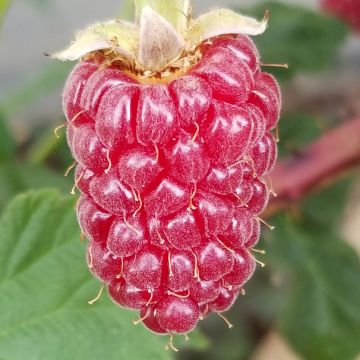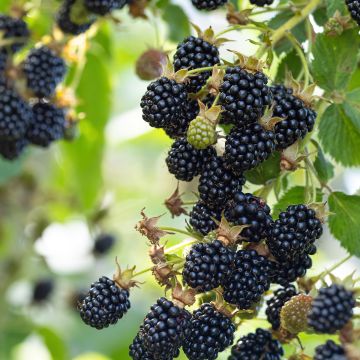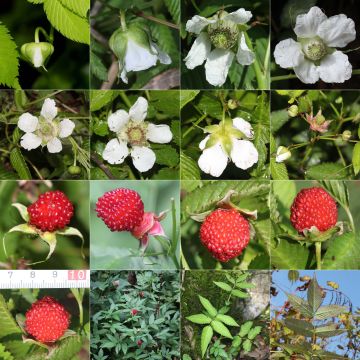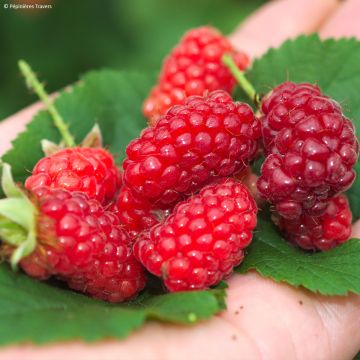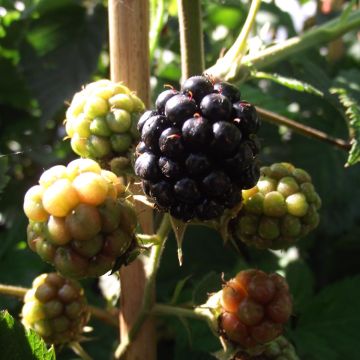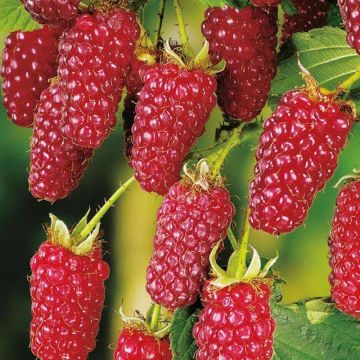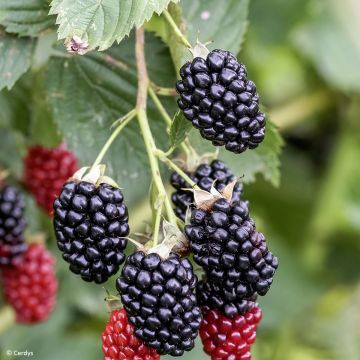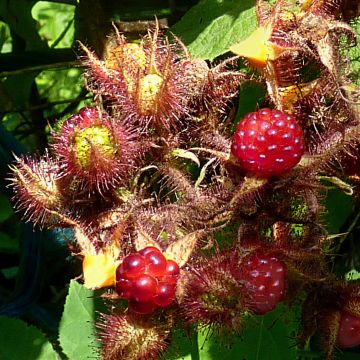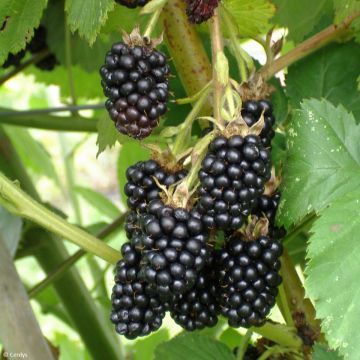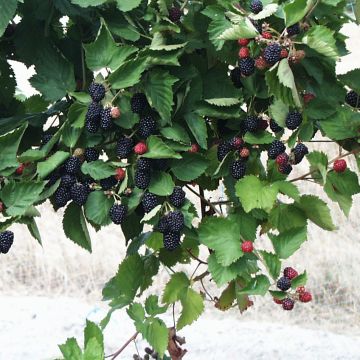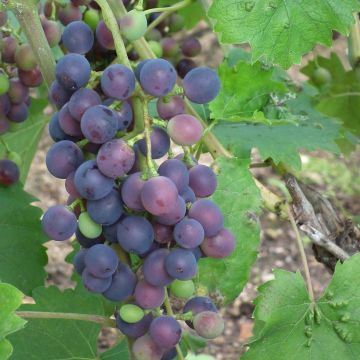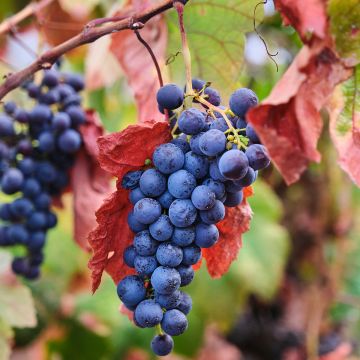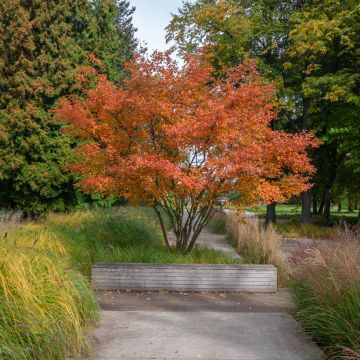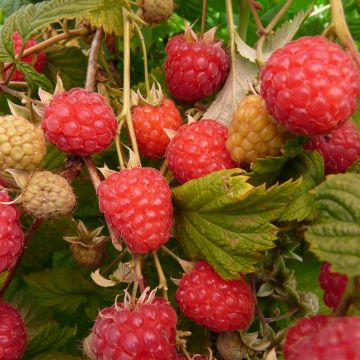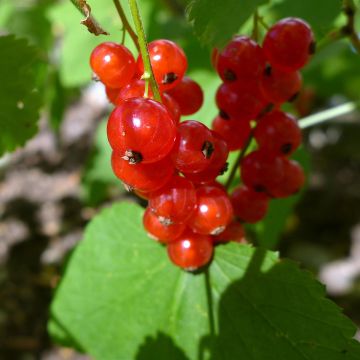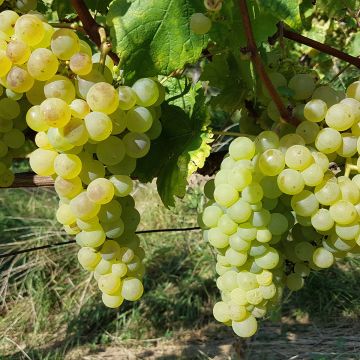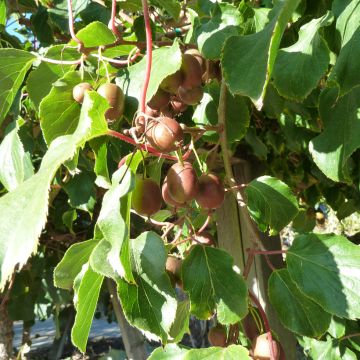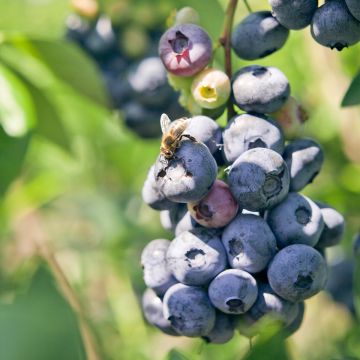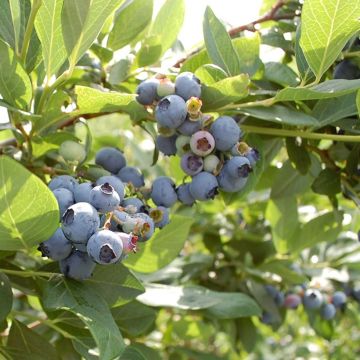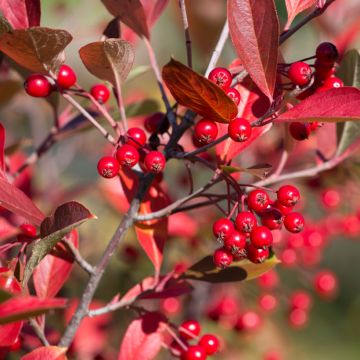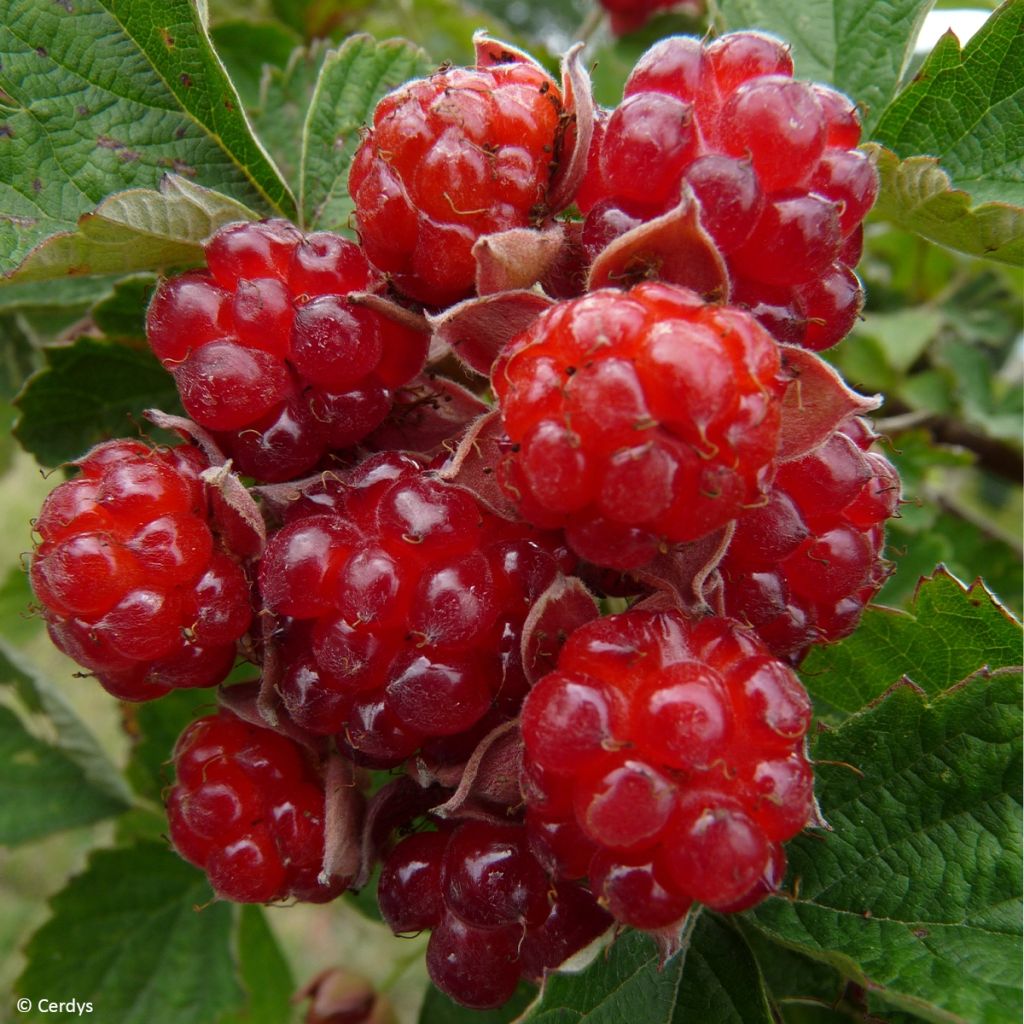

Dorman Red Organic Garden Blackberry
Dorman Red Organic Garden Blackberry
Rubus parvifolius x fruticosus Dorsett Dorman Red Bio
This item cannot be shipped to the selected country
Delivery charge from €5.90
Delivery to Corse prohibited
More information
Schedule delivery date,
and select date in basket
This plant carries a 6 months recovery warranty
More information
We guarantee the quality of our plants for a full growing cycle, and will replace at our expense any plant that fails to recover under normal climatic and planting conditions.
From €5.90 for pickup delivery and €6.90 for home delivery
Express home delivery from €8.90.
Delivery to Corse prohibited: UE law prohibits the import of this plant from mainland France to Corse as part of the fight against Xylella fastidiosa. Please accept our sincere apologies.
More information
Description
The Blackberry or Rubus (x) fruticosus Dorman Red from Organic Farming is a variety of thorny bush that produces large, round and shiny fruits, light red in colour. They resemble raspberries in appearance, but their flavour is said to be closer to that of blackberries found in our countryside, although less aromatic. Their flesh is pleasantly tart. It is a productive variety, not very demanding in terms of soil, resistant to diseases and drought. Its long stems require trellising. It can be planted from autumn to spring, excluding very cold periods. Harvesting begins in July.
The Dorman Red blackberry is a bush with long, flexible branches covered with small spines like raspberry canes. It is a very hardy plant, capable of withstanding temperatures as low as -25°C (-13°F). Its toothed and spiny leaves are fairly dark green from spring to summer, then turn yellow-orange in autumn before falling. This variety is the result of hybridisation between Rubus parvifolius, the fragrant blackberry, and the raspberry R.idaeus Dorsett. This Dorman Red Organic variety blooms in spring and summer, with small white and pink flowers, which then transform into round berries that are slightly flattened. The blackberries can be consumed fresh after harvesting or enjoyed in jams, jellies, ice creams, and in pastries (pies, muffins, etc.). Harvesting takes place in summer and early autumn. The fruits are ripe when they easily detach from their support. Although the varieties are self-fertile, it is advisable to plant at least 2 plants to improve fruiting, spacing them 2 metres (7 feet) apart.
In the garden, it is necessary to provide support for trellising: a fence, a trellis, a wall, or a fence on which horizontal wires will be stretched. Indeed, the canes, whether trailing or erect, will reach approximately 3-4 meters (10-13 feet) in length. Rest assured, cultivated blackberries produce many suckers at the base, but they are much less invasive than wild blackberries.
Blackberries can be planted in different areas of the garden. Trellising on a shallow depth allows for the creation of a small edible hedge or can be cultivated in isolation, bordering the vegetable garden, orchard or ornamental garden.
The blackberry bush, which produces garden blackberries, is sometimes confused with the mulberry tree, a tree that grows 5 to 10 metres (16 to 33 feet) tall. The blackberry belongs to the Rosaceae family, while the mulberry, whether white or black, belongs to the Moraceae family.
Report an error about the product description
Dorman Red Organic Garden Blackberry in pictures
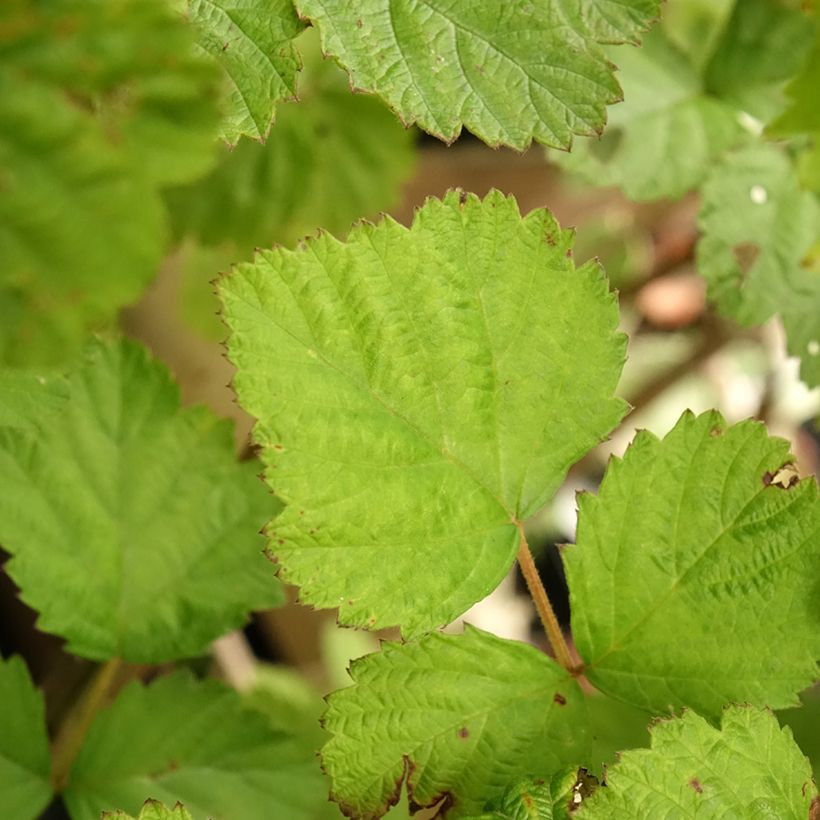

Plant habit
Fruit
Flowering
Foliage
Botanical data
Rubus
parvifolius x fruticosus Dorsett
Dorman Red Bio
Rosaceae
Cultivar or hybrid
Other Blackberry bush
Planting and care
Cultivated Dorman Red Organic blackberries enjoy sunny (not scorching) or lightly shaded locations, sheltered from strong winds. The fruit-bearing blackberry can be planted from autumn to spring, excluding frost. It thrives in all types of soil, with a preference for rich, non-calcareous soil without excessive moisture. Space the plants about 2 m (7ft) apart.
Soak the root ball in water for a few moments before planting. Dig a hole and enrich the soil with compost or potting soil. Install a support to train the stems as they grow. Place the plant, cover with soil and firm it down. Water.
Cultivated blackberries require little maintenance. Watering is mainly done in case of high temperatures and prolonged drought. Mulch the base to retain moisture in summer. In autumn, every year, apply a little compost on the surface. Mound the base, especially if your soil is very wet. The fruit-bearing blackberry is not very susceptible to diseases and pests.
Planting period
Intended location
Care
This item has not been reviewed yet - be the first to leave a review about it.
Berries
Haven't found what you were looking for?
Hardiness is the lowest winter temperature a plant can endure without suffering serious damage or even dying. However, hardiness is affected by location (a sheltered area, such as a patio), protection (winter cover) and soil type (hardiness is improved by well-drained soil).

Photo Sharing Terms & Conditions
In order to encourage gardeners to interact and share their experiences, Promesse de fleurs offers various media enabling content to be uploaded onto its Site - in particular via the ‘Photo sharing’ module.
The User agrees to refrain from:
- Posting any content that is illegal, prejudicial, insulting, racist, inciteful to hatred, revisionist, contrary to public decency, that infringes on privacy or on the privacy rights of third parties, in particular the publicity rights of persons and goods, intellectual property rights, or the right to privacy.
- Submitting content on behalf of a third party;
- Impersonate the identity of a third party and/or publish any personal information about a third party;
In general, the User undertakes to refrain from any unethical behaviour.
All Content (in particular text, comments, files, images, photos, videos, creative works, etc.), which may be subject to property or intellectual property rights, image or other private rights, shall remain the property of the User, subject to the limited rights granted by the terms of the licence granted by Promesse de fleurs as stated below. Users are at liberty to publish or not to publish such Content on the Site, notably via the ‘Photo Sharing’ facility, and accept that this Content shall be made public and freely accessible, notably on the Internet.
Users further acknowledge, undertake to have ,and guarantee that they hold all necessary rights and permissions to publish such material on the Site, in particular with regard to the legislation in force pertaining to any privacy, property, intellectual property, image, or contractual rights, or rights of any other nature. By publishing such Content on the Site, Users acknowledge accepting full liability as publishers of the Content within the meaning of the law, and grant Promesse de fleurs, free of charge, an inclusive, worldwide licence for the said Content for the entire duration of its publication, including all reproduction, representation, up/downloading, displaying, performing, transmission, and storage rights.
Users also grant permission for their name to be linked to the Content and accept that this link may not always be made available.
By engaging in posting material, Users consent to their Content becoming automatically accessible on the Internet, in particular on other sites and/or blogs and/or web pages of the Promesse de fleurs site, including in particular social pages and the Promesse de fleurs catalogue.
Users may secure the removal of entrusted content free of charge by issuing a simple request via our contact form.
The flowering period indicated on our website applies to countries and regions located in USDA zone 8 (France, the United Kingdom, Ireland, the Netherlands, etc.)
It will vary according to where you live:
- In zones 9 to 10 (Italy, Spain, Greece, etc.), flowering will occur about 2 to 4 weeks earlier.
- In zones 6 to 7 (Germany, Poland, Slovenia, and lower mountainous regions), flowering will be delayed by 2 to 3 weeks.
- In zone 5 (Central Europe, Scandinavia), blooming will be delayed by 3 to 5 weeks.
In temperate climates, pruning of spring-flowering shrubs (forsythia, spireas, etc.) should be done just after flowering.
Pruning of summer-flowering shrubs (Indian Lilac, Perovskia, etc.) can be done in winter or spring.
In cold regions as well as with frost-sensitive plants, avoid pruning too early when severe frosts may still occur.
The planting period indicated on our website applies to countries and regions located in USDA zone 8 (France, United Kingdom, Ireland, Netherlands).
It will vary according to where you live:
- In Mediterranean zones (Marseille, Madrid, Milan, etc.), autumn and winter are the best planting periods.
- In continental zones (Strasbourg, Munich, Vienna, etc.), delay planting by 2 to 3 weeks in spring and bring it forward by 2 to 4 weeks in autumn.
- In mountainous regions (the Alps, Pyrenees, Carpathians, etc.), it is best to plant in late spring (May-June) or late summer (August-September).
The harvesting period indicated on our website applies to countries and regions in USDA zone 8 (France, England, Ireland, the Netherlands).
In colder areas (Scandinavia, Poland, Austria...) fruit and vegetable harvests are likely to be delayed by 3-4 weeks.
In warmer areas (Italy, Spain, Greece, etc.), harvesting will probably take place earlier, depending on weather conditions.
The sowing periods indicated on our website apply to countries and regions within USDA Zone 8 (France, UK, Ireland, Netherlands).
In colder areas (Scandinavia, Poland, Austria...), delay any outdoor sowing by 3-4 weeks, or sow under glass.
In warmer climes (Italy, Spain, Greece, etc.), bring outdoor sowing forward by a few weeks.

































